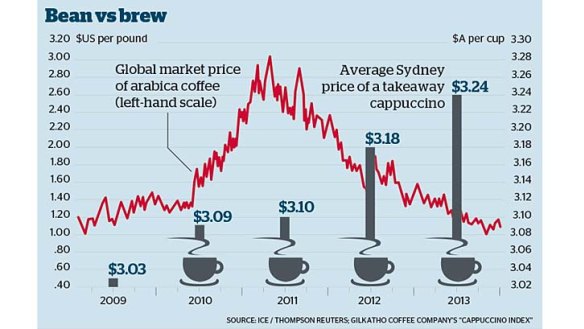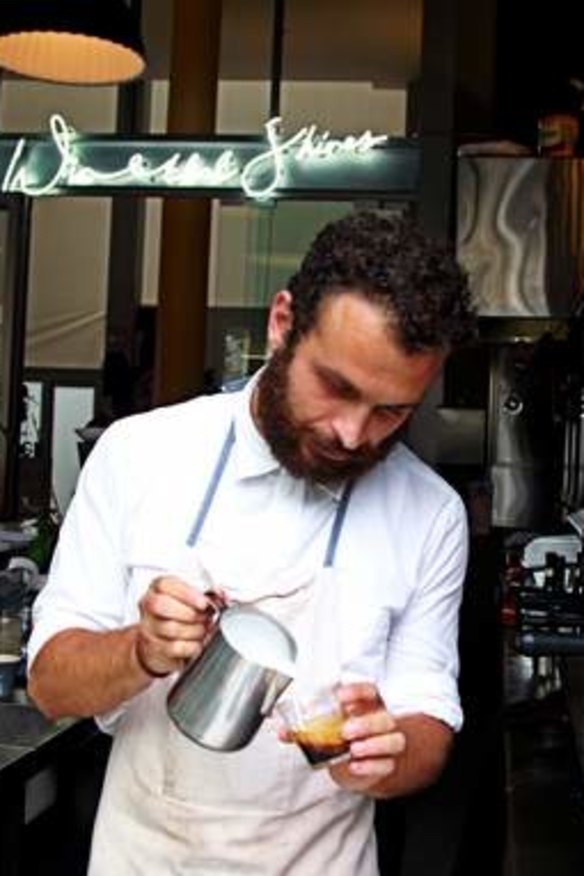Bean prices plummet but no bargains for coffee drinkers

A global glut has caused coffee bean prices to tumble but Sydneysiders might end up paying more for their cappuccino than ever.
Despite the price of arabica coffee beans plunging 54 per cent in the past three years, consumers will not see $2 lattes on the price board.
Cafe owners and roasters say the global price was not a factor in their pricing decisions, and admit the cost of a cup of coffee could even go up due to increased operational costs.
The average price for a takeaway cappuccino in Sydney last year was $3.46, up from $2.95 five years ago.
All regular takeaway coffees are $2.50 at B&W cafe in Wynyard, which opened six weeks ago. Operations manager Ross Muratore said the lower price point was based on the owners' desire to offer a ''premium'' product at a reasonable price rather than falling global coffee bean prices.
''Our model is based on frequency of unit sales rather than based on margins on each sale,'' Mr Muratore said.

He has observed coffee roasters - their key supplier - raise prices. ''Five years ago, on average, a kilo of premium coffee was $25. Nowadays it's $28 to $30 a kilo.''
Damion Alves, a coffee roaster of 17 years and supplier to supermarket brands and cafes across the country, said the coffee industry standard was to keep the retail price consistent and not reflect the fluctuations of the commodity.
He said Australian green-bean brokers had passed on cut prices to coffee roasters, in line with wholesale market trends. ''Five years ago, it was quite expensive. Bottom-end coffee beans cost $1 more a kilo, and up to $3 to $5 for the more expensive stuff,'' he said. ''But the selling price [to coffee shops and the consumer] hasn't changed much. Every operation has their reasons, running costs and other factors.''
''Back then, coffee roasters and operators were making less money because of higher prices. But now, it's a profitable business, because coffee is slightly cheaper.''
A growing taste for high-quality coffee was also boosting coffee prices across the board, he said.
Riley Street Cafe and Wine, which opened three months ago, uses Mr Alves Blacksmith-branded coffee. Barista Simon Fowler said a cup of coffee, properly costed, should cost between $4.50 and $5.
''If we were to break down the cost of a coffee, including labour, water, milk, takeaway cups, everything, I guarantee the customer would be paying a lot more,'' he said. ''But coffee drinkers are loyal to their cafe. If they've been coming all those years, it's hard to start charging them 20 cents or 30 cents more.''
Worldwide coffee-bean output is expected to exceed demand by more than six million bags (a bag is 60 kilograms) in the 2013-14 season, compared with a surplus of 11.06 million bags the previous year, the US State Department of Agriculture said. Experts blame production booms, especially in Brazil, for the price plummeting to $US1.107 ($1.20) a pound (453 grams) on the ICE Futures in New York.
Spokespeople for coffee brands Moccona and Nescafe were unavailable for comment.
- More:
- Drinks
